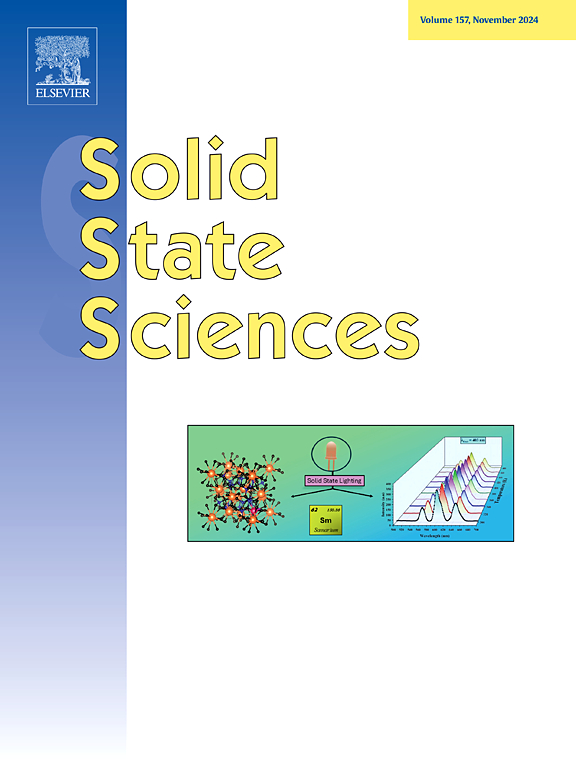Structural, thermal and electrical properties of the ceramics in the NdBaFe2/3Co2/3Cu2/3O6–δ–NdSrFe2/3Co2/3Cu2/3O6–δ system
IF 3.4
3区 化学
Q2 CHEMISTRY, INORGANIC & NUCLEAR
引用次数: 0
Abstract
Using ceramic method, the continuous serie of NdBa1–xSrxFe2/3Co2/3Cu2/3O6–δ (0.0 ≤ x ≤ 1.0) (NBS) solid solutions was prepared, their crystal structure, microstructure, oxygen nonstoichiometry, thermal expansion, electrical conductivity, and Seebeck coefficient were studied. It was found, that NBS compounds possessed perovskite-like structure and were p-type semiconductors, which lattice constants, oxygen nonstoichiometry index (δ), and Seebeck coefficient decreased, but electrical conductivity increased at substitution of barium by strontium. Near x ≈ 0.5 the phase transition from tetragonal phase into cubic one took place. The complex oxides with composition near this point (x = 0.4, 0.6) were possessed the lowest sinterability, had maximal microstrains, and minimal microhardness and values of grain sizes among the samples studied. Thermal and chemical expansion coefficients of NBS samples varied within (15.3–17.2)·10−6 K−1 and (0.94–17.0)·10−3 respectively, and, all in all, increased by x rising. The largest value of electrical conductivity (σ800 ≈ 290 S·cm−1) was fixed for the NdBa0.2Sr0.8Fe2/3Co2/3Cu2/3O6–δ solid solution.

求助全文
约1分钟内获得全文
求助全文
来源期刊

Solid State Sciences
化学-无机化学与核化学
CiteScore
6.60
自引率
2.90%
发文量
214
审稿时长
27 days
期刊介绍:
Solid State Sciences is the journal for researchers from the broad solid state chemistry and physics community. It publishes key articles on all aspects of solid state synthesis, structure-property relationships, theory and functionalities, in relation with experiments.
Key topics for stand-alone papers and special issues:
-Novel ways of synthesis, inorganic functional materials, including porous and glassy materials, hybrid organic-inorganic compounds and nanomaterials
-Physical properties, emphasizing but not limited to the electrical, magnetical and optical features
-Materials related to information technology and energy and environmental sciences.
The journal publishes feature articles from experts in the field upon invitation.
Solid State Sciences - your gateway to energy-related materials.
 求助内容:
求助内容: 应助结果提醒方式:
应助结果提醒方式:


